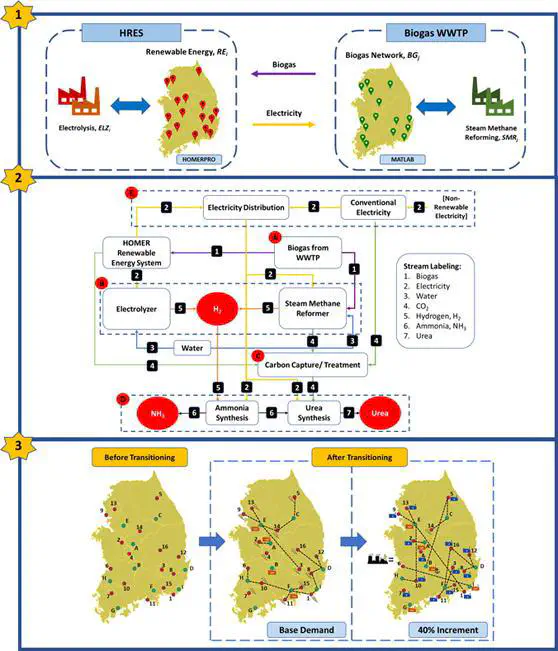Transitioning of localized renewable energy system towards sustainable hydrogen development planning: P-graph approach
 Graphical Abstract
Graphical AbstractAbstract
This study aimed to transition localized hybrid renewable energy microgrid system in multiple regions by integrating excess renewable electricity and carbon dioxide generated with biogas produced in wastewater treatment plant. The integrated optimization network in this contribution addresses the following aspects:(1) biogas supply-demand distribution network, (2) hydrogen production technology allocation involving steam methane reforming and electrolysis, (3) carbon dioxide allocation, and (4) utilization of external resources. The proposed framework is mathematically expressed as a mixed-integer linear programming problem to minimize total annual cost which will be solved by graphical optimization approach, P-graph. A case study of the existing petrochemical industry complex in South Korea has been applied to the developed model. Feasible configuration for meeting base hydrogen demand (7200 tons H2/year) has been proposed with total annual cost of 75,772,460 US $/year. Apart from base hydrogen demand, the developed model is verified with the increase of hydrogen demand for 10%, 20%, 30%, and 40%. Nonetheless, scenario of tight environmental regulations enforcement has been established among all cases where carbon dioxide emitted within the system will be captured and sequestrated. Pareto Frontier Analysis and Technique for Order of Preference by Similarity to Ideal Solution (TOPSIS) have been implemented to enhance the overall sustainability by re-ranking the pool of near-optimal solutions to propose new sustainable configuration with the consideration of both economic and environmental aspects (i.e., 40% increase of hydrogen demand; Before:142,579,000 US $/year, 109,933.00 tons CO2/year; After:142,651,000 US $/year, 109,845.00 tons CO2/year).